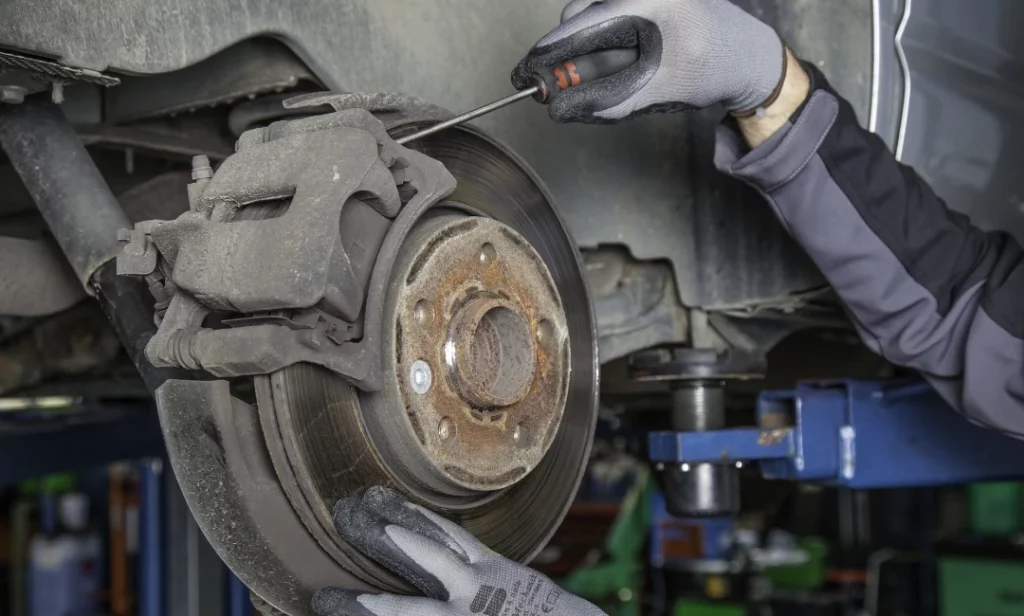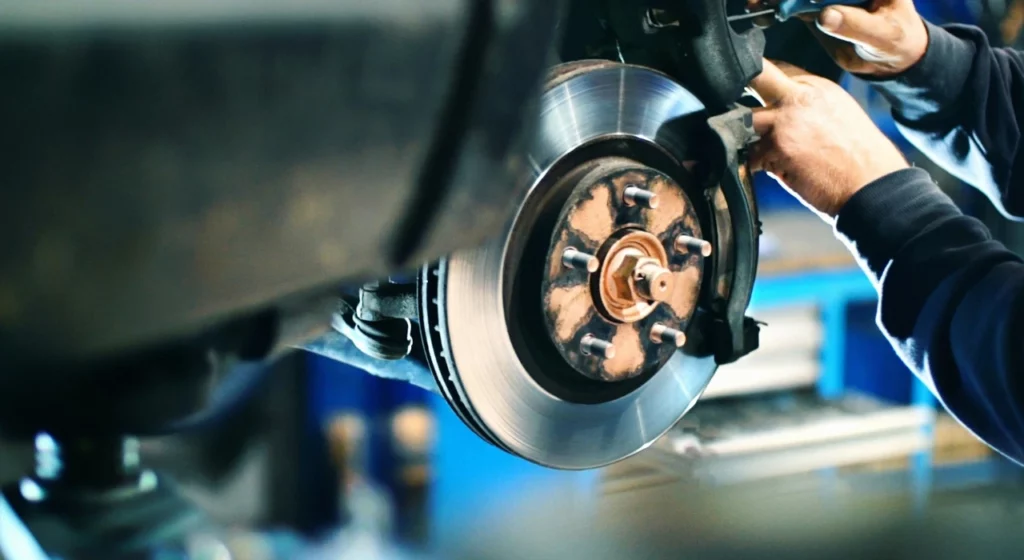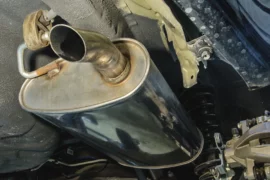Brake overheating and loss of effectiveness are big problems when driving at high performance levels. When standard cooling systems aren’t enough, more advanced solutions are required. Cryogenic active brake cooling is a specific system that uses extremely cold gases, such as liquid nitrogen or carbon dioxide, to control excessive heat in the brakes.
It’s mostly used in racing and high-performance driving, where brakes need extra support to stay cool, stop quickly, and perform well even under heavy use. This guide explains how cryogenic cooling works and helps you determine if it’s the best option for your vehicle setup, whether you’re looking to upgrade your track car or reduce brake fade.
What Is Cryogenic Active Brake Cooling?
Cryogenic active brake cooling is a system used in cars to cool down brakes by using very cold gases like liquid nitrogen or compressed CO₂. This method is different from regular airflow cooling because it only activates when needed, based on how hot the brakes get.
The system includes:
- A tank that holds the cryogenic fluid (liquid nitrogen or CO₂)
- Sensors that track brake disc temperature
- Special nozzles that are electronically controlled
When brake temperatures rise too high, the system releases cold gas through nozzles to cool down the heated components. As the gas evaporates, it rapidly absorbs heat from the brake components, reducing temperature and preventing brake fade due to overheating.
Also Read: Get The Straight Answer On Georgia Inspection Requirements
Benefits of Cryogenic Brake Cooling

Cryogenic active brake cooling provides several important benefits, especially for high-performance vehicles and motorsport use:
- Reduced Brake Fade – It reduces brake fade, meaning the brakes stay effective even after repeated hard stops, especially useful during track sessions or when driving down steep hills.
- Improved Track-Day Performance – This stability improves track-day performance by allowing drivers to brake later and with more confidence, leading to better lap times and improved control through corners.
- Longer Brake Component Life – The lower operating temperatures help extend the life of brake components, reducing the risk of rotor warping and slowing down wear on brake pads, rotors, and calipers.
- Better Driver Confidence – Drivers also gain more confidence because the brakes respond consistently, even under stressful driving conditions, making aggressive driving or racing more manageable.
- Direct Temperature Control – Unlike systems that rely on natural airflow, cryogenic cooling provides direct temperature control, making it ideal for racing brake technology, track day setups, and motorsport cooling systems where accuracy and dependability are crucial.
Suggestion: Explore The Fastest B58 Powered BMWs You Can Own.
Use Cases From Track to Street
Cryogenic active brake cooling for cars is used in motorsports, including Formula 1. In this context, cryogenic cooling in F1 helps maintain brake performance under continuous stress. It is also used in endurance racing, where controlling heat buildup is very important.
Hypercars like the Rimac Nevera, McLaren, and Porsche use this system to support performance EV braking, especially when combining regenerative and friction braking.
In street cars, adoption is limited due to cost and design complexity. However, the aftermarket segment is exploring scaled-down setups to offer brake cooling for street cars and track-day builds.
Challenges and Limitations
Even though cryogenic active brake cooling for cars brings some performance benefits, there are several issues to consider
- Cost – Installing and maintaining cryogenic tanks can be expensive. That’s why it’s not very practical for regular cars and increases the overall cost of preparing a car for racing.
- Space Issues – The system needs room for tanks, sensors, and nozzles. This can be an issue in smaller or regular cars, especially for those planning a brake system modification.
- Safety Concerns – Working with cryogenic materials like liquid nitrogen requires strict safety handling. It can be dangerous and shows the risks of using liquid nitrogen in cars.
- Hard to Refuel – Liquid nitrogen isn’t available at regular car service stations, which makes refueling difficult outside of racing or industrial environments.
These issues show that the system isn’t good for everyday use and works better for track cars, racing teams, or custom performance builds.
Related: What To Expect During Your First Valvoline Oil Change Visit?
Alternatives to Cryogenic Brake Cooling
While cryogenic brake cooling provides top-tier performance, several effective alternatives work well for most drivers and performance setups. These are often used in high-performance brake systems because they are cheaper and simpler to maintain.
- Vented or Slotted Rotors – These types of rotors allow more airflow, helping to reduce heat buildup and prevent brake fade when brakes are used repeatedly.
- Brake Ducting Kits – These kits direct outside air to the rotor and caliper, providing efficient brake duct cooling without requiring complicated hardware.
- Water Mist Cooling – This method uses a fine spray to cool brake parts through evaporation, and it is especially popular in track settings.
- Carbon-Ceramic Rotors – Made from a ceramic composite, these brake components are highly resistant to heat and wear, allowing them to cool more quickly and last longer than traditional materials. You can find them in supercars and other high-performance vehicles.
While these methods don’t offer the same level of rapid cooling as cryogenic systems, they provide a better balance between performance, cost, and ease of use. For most non-racing applications, they offer dependable brake temperature control without the added complexity.
You May Also Like: Honda B13 Service Code Fully Explained For New Drivers.
The Future of Brake Cooling Technology
Brake cooling systems are becoming more connected with the car’s main computer. These smart brake cooling systems use real-time information to track how hot the brakes are, based on how the car is being driven, its speed, the weight it’s carrying, and the road conditions. AI in vehicle systems helps predict when the brakes might get too hot, so cooling is only turned on when needed.
In some cars, especially electric vehicles, advanced cooling methods like cryogenic active brake cooling for cars might be used along with adjustable airflow, heat-absorbing parts, or ways to reuse energy. These systems change how they work depending on the situation, which makes them more efficient and helps the brakes last longer.
For self-driving or autonomous performance vehicles, exact control of brake temperature is very important. Future brake technologies will depend on AI and smart systems to keep the brakes at a safe temperature during automatic or heavy use.
Final Thoughts
Cryogenic active brake cooling in cars offers major advantages for high-performance and racing applications. It helps maintain braking consistency, reduces fade, and extends component life, ideal for serious drivers, track setups, and performance electric vehicles.
However, for most everyday cars or regular use, the cost, system complexity, and refueling needs make it less practical. Alternatives like brake ducting or ceramic rotors provide effective cooling for typical performance driving. Enthusiasts should consider their driving style, vehicle type, and budget.
For track-focused builds or motorsport use, cryogenic cooling may be worth the investment. For others, future brake technologies and smart brake cooling systems deliver reliable performance with lower maintenance.
FAQ’s
1. What is cryogenic active brake cooling in cars?
It’s a system that uses very cold gases like liquid nitrogen or carbon dioxide to cool brake parts when temperatures get too high. It activates only when needed and helps prevent brake fade during high-performance driving.
2. Is cryogenic brake cooling good for daily driving?
Not really. It’s more suitable for race cars or vehicles used on tracks. Regular cars don’t benefit much due to the high cost, refueling difficulty, and added system complexity.
3. How does cryogenic brake cooling compare to brake ducting or ceramic rotors?
Cryogenic systems cool brakes faster and more directly. However, brake ducting and ceramic rotors are more practical for most drivers since they’re more affordable and easier to maintain.
4. Which cars use cryogenic brake cooling systems?
They are used in Formula 1, long-distance racing, and some high-performance cars like the Rimac Nevera and certain McLaren models. While rare in everyday cars, they’re becoming more common in custom performance builds.
5. What are the main benefits of cryogenic active brake cooling for performance cars?
It improves braking consistency, reduces heat-related fade, extends brake component life, and enhances control during aggressive or high-load driving.
6. Will smart brake cooling systems shape the future of high-performance braking?
Yes. Smart brake cooling systems using AI in vehicle systems to monitor driving conditions and activate cooling as needed are expected to drive future brake technologies.







